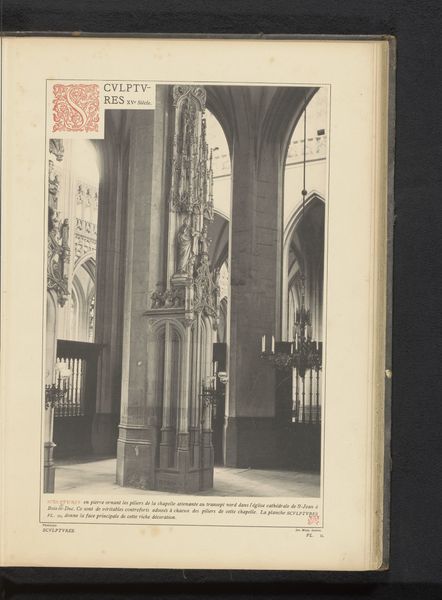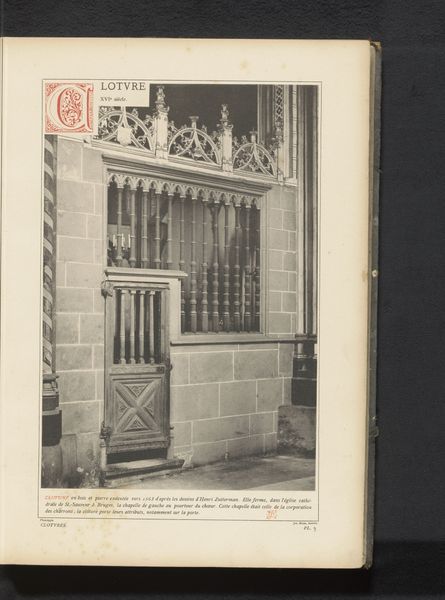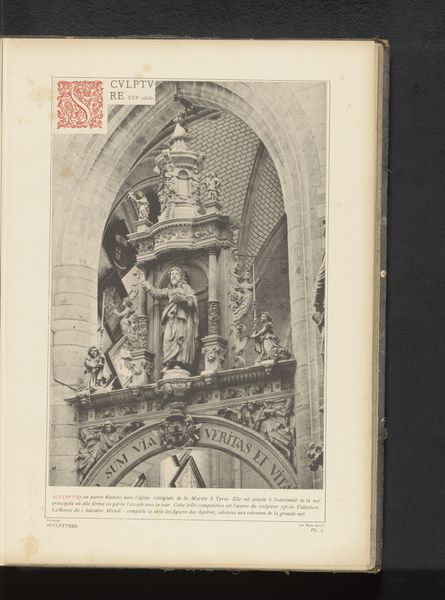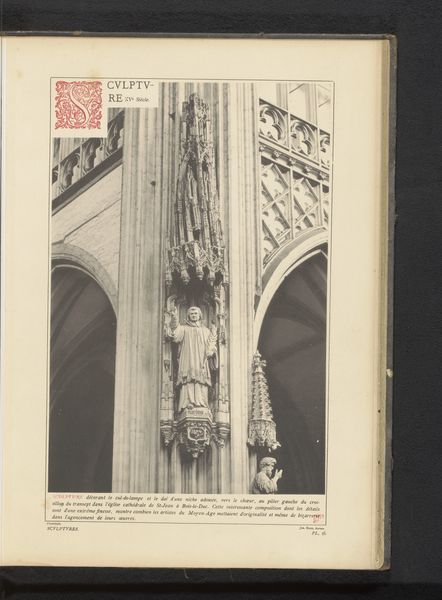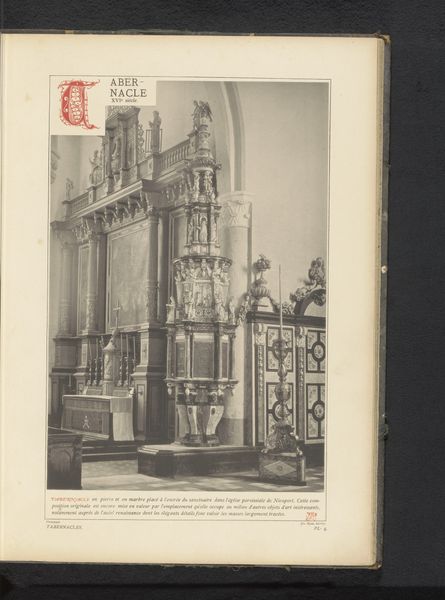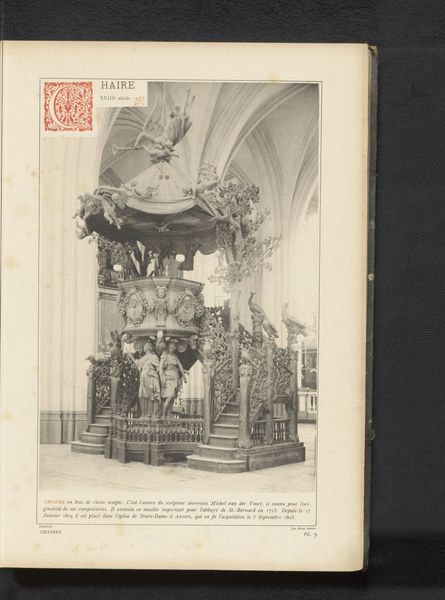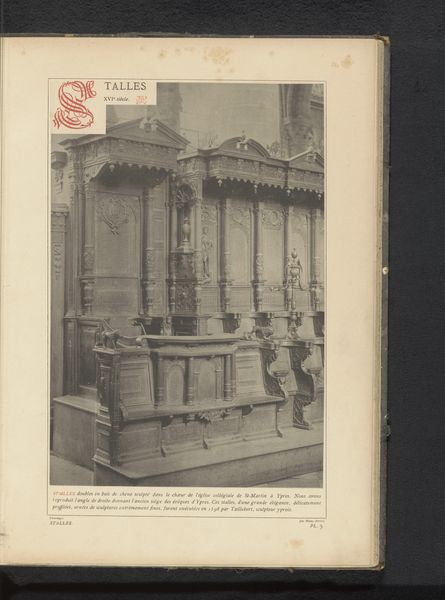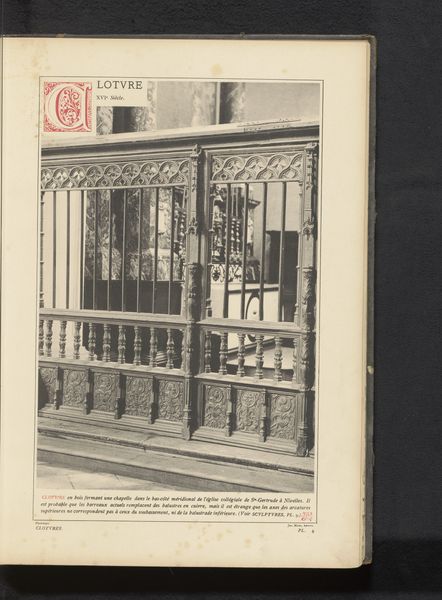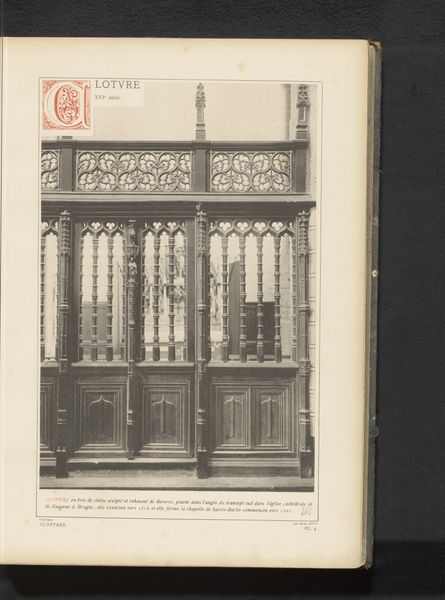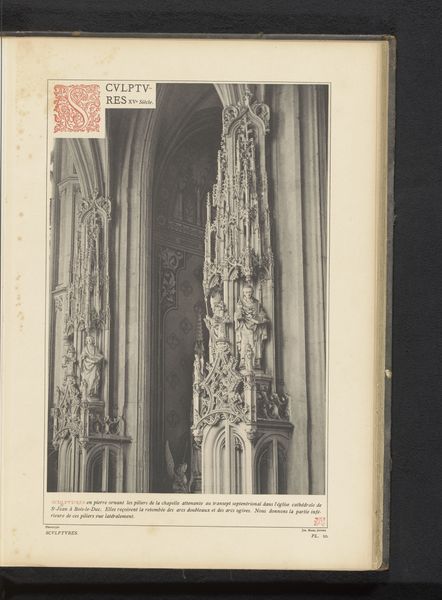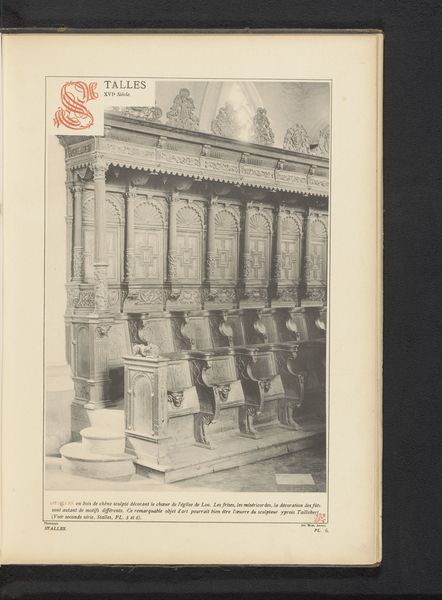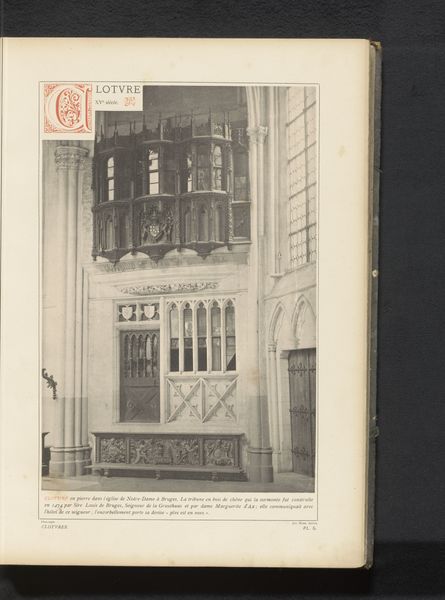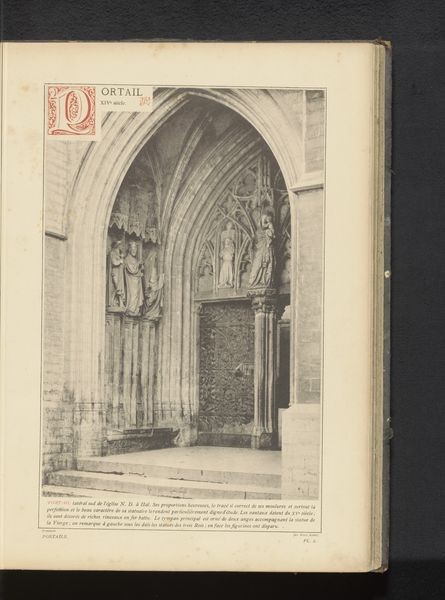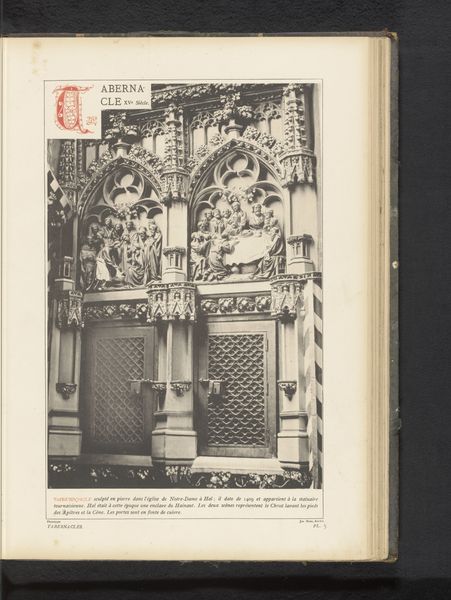
Dimensions: height 342 mm, width 231 mm
Copyright: Rijks Museum: Open Domain
This choir screen in the Sint-Jacobskerk in Antwerp, Belgium, is an assembly of carved stone elements, likely dating from the 17th or 18th century. The unknown maker or makers worked with different marbles and other stones, shaping them with chisels and saws. The material influence is clear; the design has to work within the inherent weight and structural properties of stone. Each element is carefully joined to the next, creating a screen that is both functional and visually impressive. The act of quarrying and carving stone is labor-intensive, and was traditionally a highly skilled trade. Consider the social context: Antwerp was a major trading center, and the church would have been keen to project an image of wealth and power. This choir screen represents a significant investment in time, skill, and materials. The very choice of stone speaks to its high status, as opposed to more common, less expensive materials. This reflects the relationship between art, labor, and social class. It challenges the traditional distinction between fine art and craft.
Comments
No comments
Be the first to comment and join the conversation on the ultimate creative platform.
